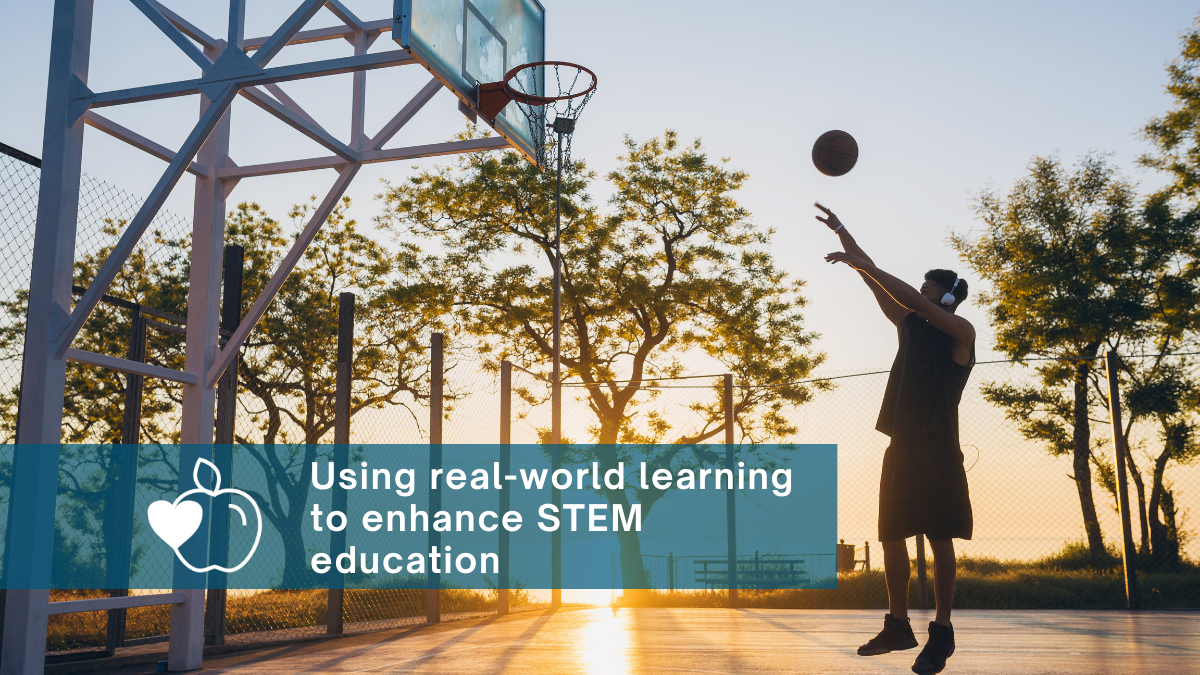As a young boy in a family of ten, I often accompanied my father to his work at Sigalagala National Polytechnic – a technical and vocational training institute in western Kenya. Occasionally, I would sneak into the institution’s power mechanics workshops, just to marvel at the huge machines and listen to my father impart knowledge and skills to his engineering students.
His passion for teaching technology was evident and this ignited my own passion for education. I was greatly inspired by my father – his hands-on approach as he guided students on their projects has been something I’ve carried with me into my own career.
Now, I’m a STEM teacher, and developing 21st-century skills in my learners means I need to draw on relevant, real-life learning experiences.
While many present-day jobs are being lost (e.g. due to AI and robotics developments which negate the need for human workers), there are also many newer jobs that are being created as part of this changing workforce. In fact, reports indicate that 85 per cent of the jobs that will exist in 2030 haven’t even been invented yet. And it’s because of this that it’s crucial that we have a futureproof curriculum.
To meet the demands of this dynamic and evolving workforce, building students’ skills, content knowledge, and fluency in STEM fields is essential.
What is STEM?
STEM – an acronym for science, technology, engineering, and mathematics – is a curriculum based on an interdisciplinary and applied approach. Rather than teaching these four subjects separately, STEM brings these academic disciplines together. STEM education not only makes students more employable; it also provides students with a more well-rounded understanding of the world around them.
Preparing for the real world means learning in the real world
Engaging learners involves an active teaching and learning approach, so as a STEM teacher, I blend various approaches in the classroom. One approach for teaching science subjects is ASEI-PDSI (Activity, Student, Experiment, Improvisation (ASEI) and Plan-Do-See-Improve (PDSI)).
Improvisation in ASEI engages my learners in experiments and practical activities, even in situations where conventional resources are lacking. Improvisation also helps develop creativity (another essential 21st-century skill), linking school learning with the learners’ immediate environment.
Furthermore, enquiry-based learning (through case-based problem-solving, research projects, lab work and guided practical work) effectively engage and inspire my students as they collaborate to achieve common goals.
Here are a few examples of how I implement real-life learning in my STEM teaching:
Learning in motion
For example, when teaching linear motion, I encourage my students to bring along their battery-powered remote-controlled toy cars. During this lesson, the students enjoy playing but inevitably gain deep insight into important concepts, such as displacement, velocity and acceleration.
Slam-dunk science
For a lesson on projectile motion, I take my students to our school basketball court and teach them how gravity influences the motion of the ball. As they make shots at the basket, they get to learn more about how vertical velocity, horizontal velocity, coupled with the angle of projection affects the range (horizontal distance) and the time of flight of the ball in air.
Testing the water
In learning how to test for metallic and non-metallic ions, my students will carry out research on the pollution effect of Nitrogen and Sulphur compounds on the Ruaka River that traverses the tea and coffee plantations around our school. This approach promotes self-learning and helps my students to develop critical and creative thinking skills to retain knowledge that leads to self-actualisation.
Working together, learning together
Since communication and collaboration are also essential 21st-century skills, I also often use the think-pair-share method of brainstorming in my classroom. This involves giving students something to think about by themselves (think), getting them to discuss ideas in pairs (pair), then having a discussion about the topic as a class (share).
This method helps my students develop their communication skills and create awareness of their classmates as learning resources. This all leads to understanding. They also develop interpersonal skills (like negotiation, problem-solving, decision making and assertiveness) which prepare them to work and socialise with other people beyond the classroom.
Peer teaching and the use of rubrics in peer lesson review also helps me to coordinate instruction and assessment, while improving learners’ understanding.
Unlike the traditional didactic approach, where the teacher is the sole source of knowledge and only effective for the reproduction of knowledge, these new approaches enhance higher-order thinking skills among learners.
Successful STEM education is easier than you may think. I encourage you to get creative and innovative in your teaching – bring the subject matter to life. This way, you’ll create memorable and meaningful learning experiences and in the process, equip your students with essential 21st-century skills.
About the Author:
Maxwell Kayesi is an award-winning educator with over 14 years of progressive experience in STEM teaching. He currently teaches at Karuri High School in Kenya.



